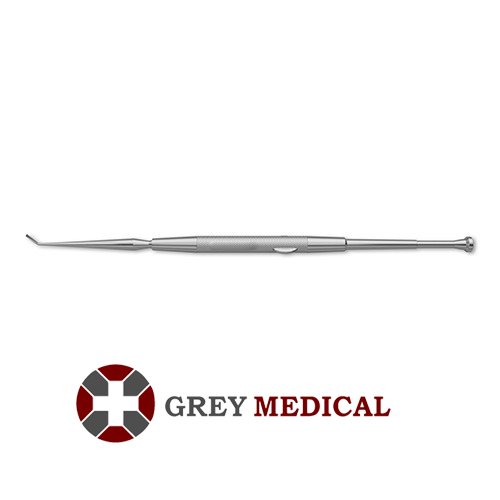Surgical procedures rely heavily on precision, expertise, and the right tools. Among the critical instruments in a surgeon's arsenal, retractors play an indispensable role. Acting as the helping hands of a surgical team, retractor instruments ensure a clear and stable view of the operative field, paving the way for success in even the most intricate surgeries.
What Are Retractor Surgical Instruments?
Retractors are specialised surgical tools designed to hold back tissue, organs, or other anatomical structures. By keeping these elements out of the way, retractors give surgeons unhindered access to the operation’s target area. Often used alongside other essential tools, these instruments are fundamental to ensuring accuracy and safety during surgical procedures.
Retractors come in a variety of shapes, sizes, and designs, each tailored for specific purposes. Whether it’s a shallow surface surgery or a deep exploratory operation, retractors are designed to meet the unique needs of each procedure. Their versatility and adaptability make them irreplaceable across countless medical specialities.
Types of Retractors and Their Purposes
Retractors are classified based on their design and the types of surgeries they're used in. While their overarching goal of providing exposure remains the same, their forms and functions vary to suit different scenarios.
Handheld retractors are among the simplest designs, requiring an assistant or surgeon to manually hold them in place. They are lightweight and easy to manoeuvre, making them ideal for shorter or less complex procedures. Common examples include the Senn retractor, widely used in small surgical sites, and the Hohmann retractor, typically seen in orthopaedic applications.
Self-retaining retractors, on the other hand, are designed to hold themselves in position once placed. These advanced tools often come with locking mechanisms, freeing the surgeon's hands for more critical tasks. Examples of self-retaining retractors include the Gelpi and Weitlaner retractors, often used in neurosurgery and spinal procedures.
There are also specialised retractors created for unique surgical focuses. For example, rib spreaders are a type of retractor used during thoracic surgeries to hold the ribs apart, creating ample space for heart or lung operations. Abdominal retractors, like the Balfour retractor, are designed to aid procedures in the abdominal cavity with efficiency and precision.
The Advantages Retractors Bring to Surgery
The use of retractor instruments extends beyond their functional role of separating tissue or organs. By holding components in place, these instruments significantly improve visibility and accessibility during surgeries. A clear surgical site minimises guesswork, allowing for greater precision when performing delicate manoeuvres.
Retractors also contribute to reducing the strain on surgical teams. Instead of manually holding tissue back, assistants can focus on other responsibilities, and surgeons can work more efficiently, potentially shortening operation times. This efficiency not only enhances the surgical experience but can also reduce the risks associated with prolonged surgeries, such as blood loss or increased infection risk.
Patient outcomes are another area where retractors prove invaluable. Their use ensures that tissues are carefully and strategically displaced rather than compressed or damaged. This leads to reduced post-operative pain, fewer complications, and faster recovery times—a win for both medical teams and patients alike.
Modern Innovations in Retractor Design
Advances in modern medicine have driven developments in retractor technology, creating tools that are more ergonomic, durable, and effective. For example, some retractors now feature fibre optics or built-in light sources for better illumination during minimally invasive procedures. These innovations enable surgeons to operate with greater precision, even in poorly lit or hard-to-reach areas.
Materials have also seen an evolution. Traditionally made of stainless steel, retractors now feature alternatives such as carbon fibre or titanium, which are lightweight and corrosion-resistant. Disposable retractors made from medical-grade plastics have further advanced surgical hygiene, reducing the risk of cross-contamination.
Additionally, the rise of robotic surgery has introduced robotic retractors. Integrated with robotic systems, these retractors can be controlled with extreme precision, further improving the outcomes of highly technical procedures such as laparoscopic or robotic prostate surgeries.
The Crucial Role of Retractors in Surgery
Retractor instruments may not always steal the spotlight among surgical tools, but their importance is impossible to overstate. By enabling precision, reducing risks, and improving efficiency, retractors form the backbone of nearly every successful surgical intervention. Whether in emergency trauma cases, planned orthopaedic surgeries, or minimally invasive procedures, retractors are indispensable for ensuring patient safety and positive surgical outcomes.
The diversity within retractor designs underlines their adaptability in meeting the unique needs of different surgical disciplines. From simple handheld instruments to advanced robotic-assisted devices, retractors continue to evolve with the demands of modern medicine.
A Vital Component of Surgical Advancement
Retractors are more than tools—they are enablers of surgical success. By providing unobstructed access to the surgical site and supporting the complex demands of modern procedures, these instruments encapsulate the ingenuity of medical technology. With ongoing innovations, retractors remain at the forefront of surgical practice, improving outcomes for both surgeons and patients alike.
Understanding the role of retractors not only sheds light on their importance but also highlights the collaboration and precision inherent in every medical procedure. These seemingly simple tools are pivotal in the quest for safe, effective, and groundbreaking surgeries.





Comments